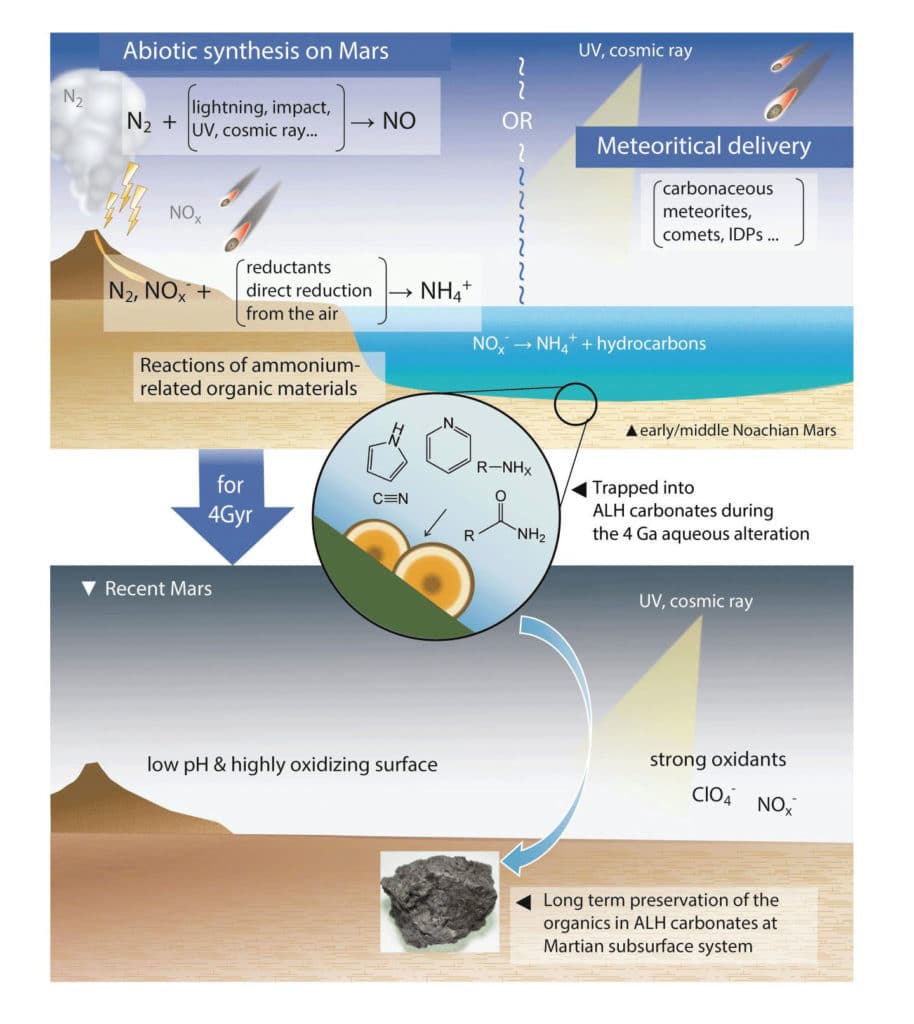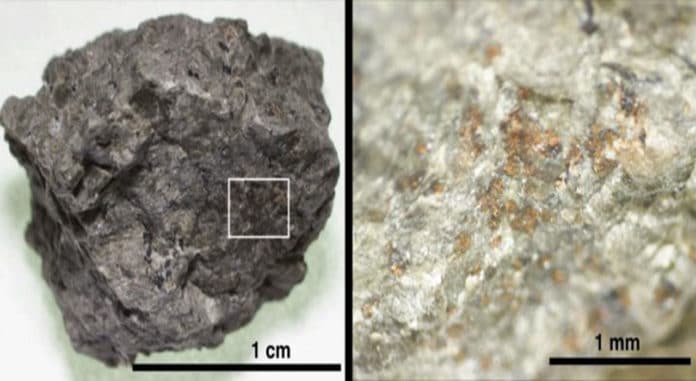Martian meteorites are pieces of Mars’ surface that were themselves impacted into space by meteor impacts, and which eventually arrived on Earth. They give bits of knowledge into Martian history.
One such meteorite is Allan Hills (ALH) 84001, named for the region in Antarctica it was found in 1984, is especially important.
It contains orange-colored carbonate minerals, which precipitated from salty liquid water on Mars‘ near the surface 4 billion years ago. As these minerals record Mars’ initial aqueous condition, numerous investigations have attempted to comprehend their unique chemistry and whether they may give proof to ancient life on Mars.
Be that as it may, past studies experienced defilement with terrestrial material from Antarctic snow and ice, making it difficult to state the amount of the organic material in the shooting star was genuinely Martian. Notwithstanding carbon, nitrogen (N) is an essential element for terrestrial life and a useful tracer for solar system evolution. However, because of past specialized restrictions, nitrogen had not yet been estimated in ALH84001.

In a new study, scientists from the Earth-Life Science Institute (ELSI) at Tokyo Institute of Technology, Japan, and from the Institute of Space and Astronautical Science at Japan Aerospace Exploration Agency have discovered nitrogen-bearing organic material in carbonate minerals in ALH 84001. According to scientists, this organic material has most likely been preserved for 4 billion years since Mars’ Noachian age.
Since carbonate minerals normally precipitate from the groundwater, this finding recommends a wet and natural rich early Mars, which could have been habitable and favorable for life to start.
Using state-of-the-art analytical techniques, scientists were able to study the nitrogen content of the ALH84001 carbonates. Now, scientists are confident that the first substantial evidence for 4-billion-year-old Martian organics containing nitrogen.’
Terrestrial contamination is a severe problem for studies of extraterrestrial materials. To avoid such contamination, the team developed new techniques to prepare the samples. For example, they used silver tape in an ELSI clean lab to pluck off the tiny carbonate grains, which are about the width of a human hair, from the host meteorite.
Scientists then prepared these grains further to remove possible surface contaminants with a scanning electron microscope-focused ion beam instrument at JAXA. They also used a technique called Nitrogen K-edge micro X-ray Absorption Near-Edge Structure (μ-XANES) spectroscopy, which allowed them to detect nitrogen present in tiny amounts and to determine what chemical form that nitrogen was in. Control samples from nearby igneous minerals gave no detectable nitrogen, showing the organic molecules were only in the carbonate.
After careful contamination check, scientists determined the detected organics were most likely truly Martian. They also determined the contribution of nitrogen as nitrate, one of the solid oxidants on current Mars, was unimportant, proposing that early Mars most likely didn’t contain strong oxidants. As researchers have suspected, it was less-oxidizing than it is today.
There are many outstanding open questions, such as where did these nitrogen-containing organics come from?
Atsuko Kobayashi from the Earth-Life Science Institute (ELSI) at Tokyo Institute of Technology, Japan, said, “There are two main possibilities: either they came from outside Mars, or they formed on Mars. Early in the Solar System’s history, Mars was likely showered with significant amounts of organic matter, for example, from carbon-rich meteorites, comets, and dust particles. Some of them may have dissolved in the brine and been trapped inside the carbonates.”
“Alternatively, chemical reactions on early Mars may have produced the N-bearing organics on-site. Either way, they say, these findings show there was organic nitrogen on Mars before it became the red planet we know today; early Mars may have been more ‘Earth-like,’ less oxidizing, wetter, and organic-rich. Perhaps it was ‘blue.'”
Journal Reference:
- Mizuho Koike, In-situ preservation of nitrogen-bearing organics in Noachian Martian carbonates. DOI: 10.1038/s41467-020-15931-4
